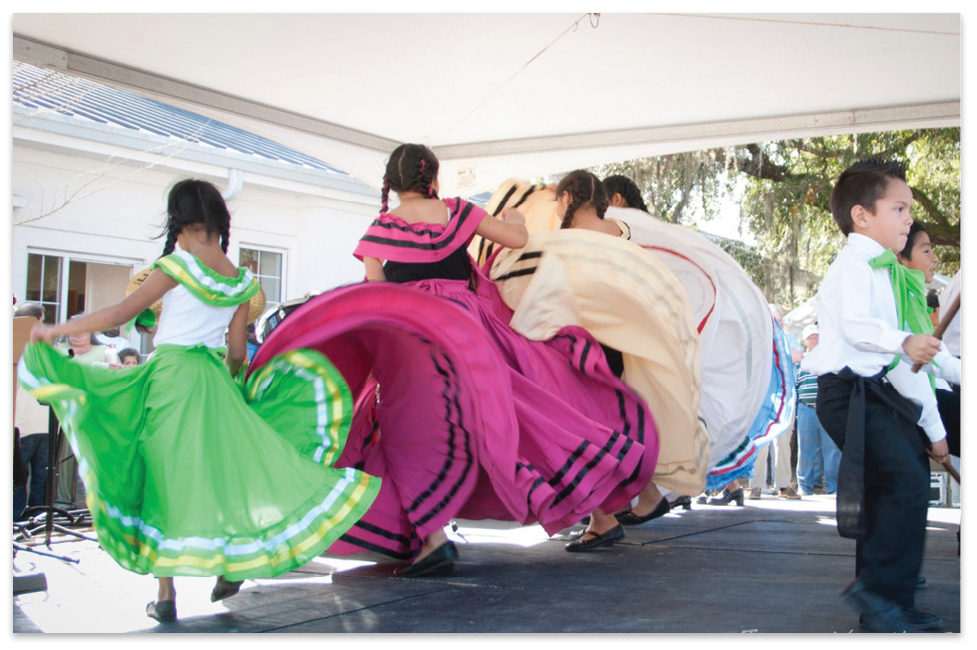This year's drive-through event is planned for November 20

(Clockwise from top left) The Rev. Greg Snyder, Rector of St. John’s Parish Anglican Church, with performers from St. James Bethel Church; Claudia Boyce (far right) with LRP Ministries pastor Mary Stoney and her granddaughter; In 2019, community members gathered in a circle at St. John’s Parish singing “Amazing Grace” to close the Feeding of the Multitude.
In the Bible story, Jesus miraculously feeds thousands of hungry people with only two fish and five loaves. Relying on hours of hard work, cooperation, and prayer, members of John’s Island church congregations pull off their own Feeding of the Multitude annually on the Saturday before Thanksgiving.
Last year, the pandemic led to an even greater need, more prayers, and calls for help in the form of donations of food and money. Some might say those prayers were answered. “We used to reach about 1,200 people, including the homebound,” says organizer Claudia Boyce. “In 2020, we reached about 5,000.”
Feeding of the Multitude began in 2008 after Boyce attended a similar function sponsored by St. John’s Chapel on Charleston’s East Side and was challenged by the Rev. Dallas Wilson to take the idea back to her church. Her fellow congregants at St. John’s Parish accepted enthusiastically and began an outreach that would grow to include more than 25 area churches. “It hit us, this is a way for us to come together as a community and get to know each other better,” Boyce says. “It’s a melding of cultures and developing wonderful relationships.”
Now in its 14th year, Feeding of the Multitude usually combines a meal cooked by volunteers, as well as music and dance, informational booths, and prayer. The original goal was to feed 1,000 people from John’s and Wadmalaw islands. “People would volunteer to bring in a dessert or pans of rice, yams, beans, or dressing that would feed up to 50,” Boyce says. “We also had a team of men who’d cook the meat and bring over pans of sliced turkey or ham.”

In previous years, dancers from Holy Spirit Catholic Church performed at the event.
In the past, volunteers delivered meals to about 600 people who could not travel to the church because they were physically unable or afraid. Roderigo Haddad de Sousa, who ministers to migrants living in work camps on John’s Island, says residents are often unable to obtain a drivers’ license and are not comfortable socializing beyond their community.
The event is a catalyst for developing meaningful relationships beyond November. “When we had the atrocity at Mother Emanuel, the first thing we did was gather together,” Boyce says. “The shooting happened on a Wednesday. That Saturday, we all gathered in a park and prayed together, Black, white, and Latino. It was powerful.”
When the pandemic made it unsafe to provide an in-person meal last year, organizers traded cooked meals for bags of groceries with enough food to feed a family of four, distributing them via a drive-through. After word got out that the bags would be offered starting at noon, cars were lined up around the field in front of the parish hall by 9 a.m. “Our goal was 600 bags of groceries,” Boyce explains. “Instead, we had 1,200 bags donated and enough money to buy extra turkeys. We were going to purchase 600 turkeys, but quickly we had enough to buy 900, as well as Food Lion gift certificates in case we ran out. We didn’t want people to do without.” After the event, they divided a remaining $4,000 among four food banks on John’s Island and Wadmalaw.
Though they were hoping to return in-person this year, COVID is forcing organizers to host another drive-through, scheduled for noon to 3 p.m. on November 20. Still, Boyce is looking forward to eventually sitting down again for a meal with community members on the church grounds. “While we give out more food this way, what we don’t have is that interaction with people,” she says. That focus on nourishing the body and soul has led to lasting relationships. “If it wasn’t for the Feeding, we wouldn’t have built that trust.”